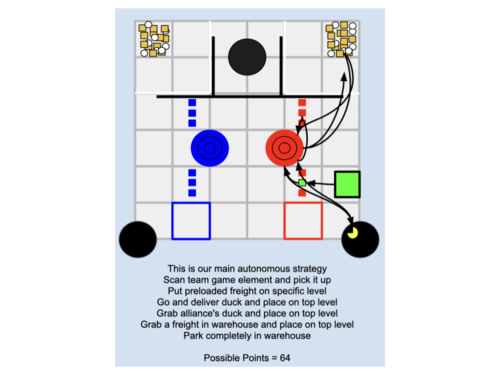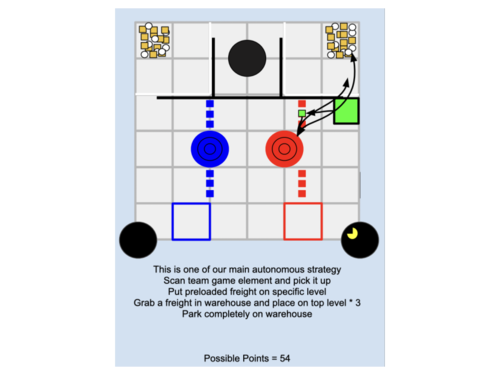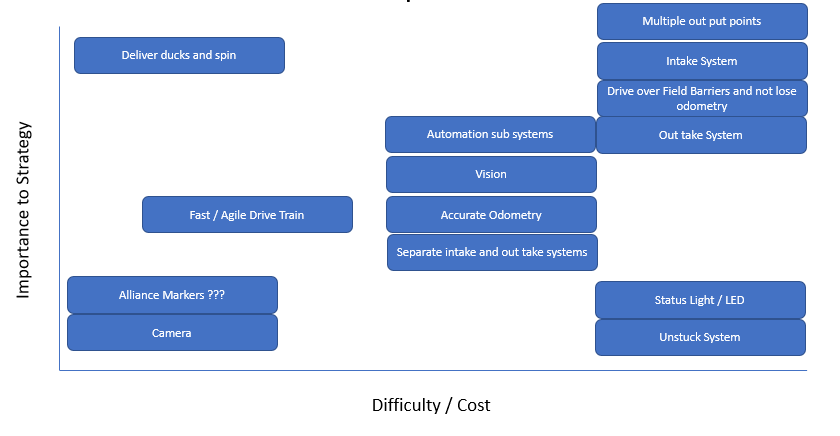Game Strategy
In the 30 second autonomous period, we want to use as much time as we can to maximize the amount of points we can get. To do this our strategy at the start of the beginning was to scan the team marker. This gives us which level we have to place our preloaded freight. After we scan the team marker we pick the team marker up with our and we head over to our alliance shipping hub to place our freight and get the bonus points. Then we move to the carousel so our wheel is making contact with the side and rotate the carousel. After the duck is delivered, we can predict where the duck will land and pick the duck up with our intake, and place the duck on the top level of the shipping hub. It navigates to the warehouse and intakes a freight and places it on the top level. With the time left the robot navigates towards the warehouse and parks completely inside it. The maximum amount of points we can get with this code is 64 points.



